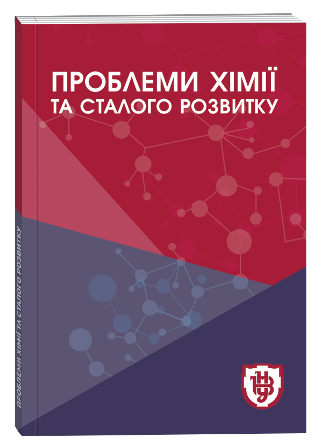ANALYSIS OF CRYSTAL STRUCTURES OF THE OUTPUT PHASES OF THE QUASITERNARY Y2S3 – LA2S3 – PBS SYSTEM
DOI:
https://doi.org/10.32782/pcsd-2021-1-3Keywords:
crystalline structure, coordinate setting, isothermal section, quasi-binary sectionAbstract
The articles present a theoretical and experimental approach to the study of the quasi-ternary Y2S3 – La2S3 – PbS system. The synthesis of the initial samples of the systems was carried out using solid-phase reactions in vacuum quartz ampoules at a residual pressure of 10-2. The maximum synthesis temperature is 1323 K. Analysis of the initial components of the quasi-ternary Y2S3 – La2S3 – PbS system indicates may be components of the studied quasi-ternary system. Their crystal structure is described by an octahedral filling. The ternary Y2PbS4 phases – Cmc21 (a = 7.9301 Å; b = 28.6966 Å; c = 12.0511 Å), La2PbS4 – I 4 3d (a = 8.767 Å) are determined by the base concentration and the volume-centered cell, respectively. A mobile decrease in the amount of cationic composition leads to an increase in the elementary cell parameters and at the same time the Y and Pb atoms occupy separate positions in the structure, and the La and Pb atoms form a mixture of {0.667 La + 0.333 Pb}, which is localized at site 12a. At the experimental stage, the existence of ternary phases was confirmed and it was determined that quasi-binary equilibria Y2S3 – La2PbS4 and Y2PbS4 – La2PbS4 are carried out in the quasi-triple system. The wide two-phase region Y2S3 – La2PbS4 is due to the existence of a solid solution of La2+2/3xPb1-xS4 (x = 0 ÷ 0.69). Based on the results of a set of studies, an isothermal section was constructed, which conducts experimental research activities. The diffraction pattern of powder samples was taken at room temperature on DRON-4-13. The crystal structure was analyzed using the WINCSD software package (Version 2016).
References
Kuomoto K., Mori T. Thermoelectric nanomaterials: Materials Design and Applications. Berlin: Springer. 2013. Vol. 182.
Quansheng Guo, Jean-Baptiste Vaney, Raymond Virtudazo, Ryunosuke inami, Yuichi Michiue, Yoko Yamabe-Mitarai, and Takao Mori. Thermoelectric roperties of Variants of Cu4Mn2Te4 with Spinel-Related Structure. Inorg. Chem. 2018. Vol. 57. P. 5258–5266.
G. Jeffrey Snyder T. Caillat J.-P. Fleurial. Mat Res Innovat (2001) 5:67–73 Thermoelectric Properties of Chalcogenides with the Spinel Structure. Mat Res Innovat. 2001. 5: 67–73.
Wei Hu, Ni Qin, Guangheng Wu, Yanting Lin, Shuwei Li, and Dinghua Bao. Opportunity of Spinel Ferrite Materials in Nonvolatile Memory Device Applications Based on Their Resistive Switching Performances. 2012. 134(36). P. 14658–14661.
K. Jin, G. He, X. Zhang, S. Maruyama, S. Yasui, R. Suchoski, J. Shin, Y. Jiang, H. S. Yu, J. Yuan, L. Shan, F. V. Kusmartsev, R. L. Greene, I. Takeuchi. Anomalous magnetoresistance in the spinel superconductor LiTi2O4. Nat. Commun. 2015. 6: 7183.
Lu Zou, Xu Xiang, Min Wei, Feng Li*, and David G. Evans. Single-Crystalline ZnGa2O4 Spinel Phosphor via a Single-Source Inorganic Precursor Route. Inorg. Chem. 2008. 47(4). P.1361–1369.
Charles Gervas, Malik Dilshad Khan, Chunyang Zhang, Chen Zhao, Ram K Gupta, Emanuela Carleschi, Bryan P Doyle, Neerish Revaprasadu. Effect of cationic disorder on the energy generation and energy storage applications of NixCo3−xS4 thiospinel. RSC adv. 2018. 8(42). P. 24049–24058.
Allison Wustrow, Baris Key, Patrick J Phillips, Niya Sa, Andrew S Lipton, Robert F Klie, John T Vaughey, Kenneth R Poeppelmeier. Synthesis and Characterization of MgCr2S4. Inorg Chem. 2018. 57(14). P. 8634–8638.
Yudong Lang, Lin Pan, Changchun Chen, and Yifeng Wang. Thermoelectric Properties of Thiospinel-Type CuCo2S4. Journal of Electronic Materials. 2019. Vol. 48. P. 4179–4187.
Cédric Bourgès, Ventrapati Pavan Kumar, Hiroki Nagai, Yuzuru Miyazaki, Bernard Raveau, Emmanuel Guilmeau. Role of cobalt for titanium substitution on the thermoelectric properties of the thiospinel CuTi2S4. Journal of Alloys and Compounds. 2019. Vol. 781. P. 1169–1174.
Олексеюк І.Д., Смітюх О.В., Марчук О.В., Гулай Л.Д. Система PbS – Y2S3 – La2S3 за температури 770 К. Актуальні проблеми фундаментальних наук: матеріали I Міжнар. наук. конф. Луцьк : Вежа – Друк. 2015. С. 260–263.
Sharma R.C., Lin J.C., Chang Y.A. Metall. Trans. Data Base of Diagrams. Inst, of Chem. Materials Problems. 1999. V. 237. P.
Franzen H.F., Massalski T.B., Okamoto H.La – S (Lanthanum-Sulfur). Binary Alloy Phase Diagrams. Materials Park, Ohio: ASM International.1990. V. 3. P. 2418–2421.
Noda Y., Masumoto K., Ohba S. Temperature Dependence of Atomic Thermal Parameters of Lead Chalcogenides, PbS, PbSe and PbTe. Acta Cryst. 1987. V. 43. P. 1443–1445.
Schleid Th. Crystal structureі of D-Y2S3 and Y2OS2. Eur. J. Solid State Inorg. Chem. 1992. V. 29. P. 1015–1028.
Basancon P., Adolphe C., Flahaut J., Laruelle P. Sur les varietes alpha et beta des sulfures L2S3 des terres rares. Materials Research Bulletin. 1969. V. 4. P. 227–238.
Gulay L. D., Daszkiewicz M., Shemet V. Ya. Crystal structure of the R2PbS4 (R = Y, Dy, Ho, Er and Tm) compounds and a comparison with the crystal structures of other rare-earth lead chalcogenides. Wroclaw: 50 Polish Crystallographic Meeting, 26-28 VI 2008: Collected Abstracts. 2008. P. 63.
Patrie M., Pardo P. Systemes L2X3 – PbX (L = lanthanides, X= S, Se, Te). Bulletin de la Societe Chimique de France. 1969. V. 11. P. 3832-3834.







